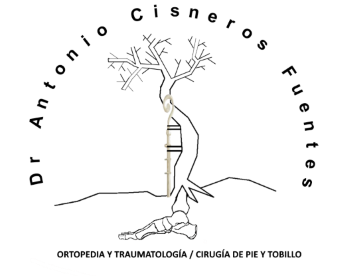- El historial de medicamentos recetados de un atleta es una parte integral de su perfil médico y debe discutirse durante el tiempo de cualquier evaluación médica.
- Es importante tener en cuenta que una ruptura del tendón de Aquiles es una lesión devastadora, y a menudo puede terminar con su carrera.
- En comparación con el uso de otros antibióticos recetados, el uso de fluoroquinolonas conlleva un riesgo 3,8 veces mayor de tendinopatía de Aquiles.
- Mis experiencias anecdóticas han demostrado que no requiere niveles relativamente altos de estrés para inducir una lesión en el tendón cuando se prescriben fluoroquinolonas.
- Cargar un tendón con ejercicio excéntrico y / o carga pesada probablemente no sea adecuado para el cuidado de atletas con la condición distintiva de tendinopatía inducida por fluoroquinolona.
https://simplifaster.com/articles/antibiotics-tendon-ruptures-athletes/
References
1. Manfulli, N., Sharma, P., and Luscombe, K.L. “Achilles tendinopathy: aetiology and management.” Journal of the Royal Society of Medicine. 2004; 97(10):472–476.
2. Garrick, J.G. and Requa, R.K. “The epidemiology of foot and ankle injuries in sport.” Clinical Sports Medicine. 1988; 7(1):29–36.
3. Yang, J., Hodax, J.D., Machan, J.T., et al. “Factors Affecting Return to Play After Primary Achilles Tendon Tear: A Cohort of NFL Players.” Orthopaedic Journal of Sports Medicine. 2019; 7(3):1–8.
4. Mai, H.T., Alvarez, A.P., Freshman, R.D., et al. “The NFL Orthopaedic Surgery Outcomes Database (NO-SOD): The Effect of Common Orthopaedic Procedures on Football Careers.” American Journal of Sports Medicine. 2016; 44(9):2255–2262.
5. Möller, A., Astron, M., and Westlin, N. “Increasing incidence of Achilles tendon rupture.” Acta Orthopaedica Scandinavica. 1996; 67(5):479–481.
6. Schepsis, A.A., Jones, H., and Haas, A.L. “Achilles tendon disorders in athletes.” American Journal of Sports Medicine. 2002; 30(2):287–305.
7. Kujala, U.M., Sarna, S., and Kaprio, J. “Cumulative incidence of Achilles tendon rupture and tendinopathy in male former elite athletes.” Clinical Journal of Sports Medicine. 2005; 15(3):133–135.
8. Oliphant, C.M. and Green, G.M. “Quinolones: a comprehensive review.” American Family Physician. 2002; 65(3):455–464.
9. Bailey, R.R., Kirk, J.A., and Peddie, B.A. “Norfloxacin-induced rheumatoid disease.” The New Zealand Medical Journal. 1983; 96(736):590.
10. Lewis, T.G. “A rare case of ciprofloxacin-induced bilateral rupture of the Achilles tendon.” BMJ Case Reports. 2009;2009 doi:10.1136/bcr.08.2008.0697.
11. Khaliq, Y. and Zhanel, G.G. “Fluoroquinolone-associated tendinopathy: a critical review of the literature.” Clinical Infectious Diseases. 2003; 36(11):1404–1410.
12. Akali, A.U. and Niranjan, N.S. “Management of bilateral Achilles tendon rupture associated with ciprofloxacin: a review and case presentation.” Journal of Plastic, Reconstructive & Aesthetic Surgery. 2008; 61(7):830–834.
13. Chajed, P.N., Plit, M.L., Hopkins, P.M., Malouf, M.A., and Glanville, A.R. “Achilles tendon disease in lung transplant recipients: association with ciprofloxacin.” European Respiratory Journal. 2002; 19(3):469–471.
14. Cancienne, J.M., Brockmeier, S.F., Rodeo, S.A., Young, C., and Werner, B.C. “Early postoperative fluoroquinolone use is associated with an increased revision rate after arthroscopic rotator cuff repair.” Knee Surgery, Sports Traumatology, Arthroscopy, 2017; 25(7): 2189–2195.
15. Khan, K.M. and Cook, J.L. “Overuse Tendon Injuries: Where Does the Pain Come From?” Sports Medicine and Arthroscopic Review. 2000; 8(1):17–31.
16. Fahstrom, M., Jonsson, P., Lorentzon, R., and Alfredson, H. “Chronic Achilles tendon pain treated with eccentric calf-muscle training.” Knee Surgery, Sports Traumatology, Arthroscopy. 2003; 11(5):327–333.
17. Beyer, R., Kongsgaard, M., Hougs Kjær, B., et al. “Heavy Slow Resistance Versus Eccentric Training as Treatment for Achilles Tendinopathy: A Randomized Controlled Trial.” American Journal of Sports Medicine.2015; 43(7):1704–1711.

Robert Panariello
Robert Panariello, MS, PT, ATC, CSCS, is Founding Partner and Chief Clinical Officer at Professional Physical Therapy, which has 185 facilities in five Northeast states and the 20,000 square foot, state-of-the-art Professional Athletic Performance Center in Garden City, New York. He is a former Division I collegiate, professional football and soccer team head strength and conditioning coach, researcher, and CEO. He has studied the science of strength and conditioning with national weightlifting teams and coaches, as well as other various national sport teams, in Bulgaria, the former Soviet Union, and former East Germany. As a researcher and author, Panariello has more than 60 peer-reviewed research orthopedic, sports medicine, sports physical therapy, and strength and conditioning journal articles, book chapters, and book publications.
Panariello is the recipient of the 2016 National Strength and Conditioning Association (NSCA) Sports Medicine/Sports Rehabilitation Specialist of the Year Award and the 2015 American Academy of Sports Physical Therapy (AASPT) Lynn Wallace Clinical Educator of the Year Award. He was one of the inaugural inductees to the USA Strength and Conditioning Coaches Hall of Fame in 2003.
Copyright © 2020 SimpliFaster. All Rights Reserved.


 Dr Antonio Cisneros Fuentes
Ortopedia y Traumatología. Cirugía de Pie y Tobillo
Dr Antonio Cisneros Fuentes
Ortopedia y Traumatología. Cirugía de Pie y Tobillo